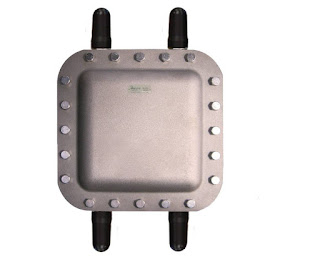 When electrical equipment is used in, around, or near an atmosphere that has flammable gases, vapors, or flammable liquids, there is always a possibility or risk that a fire or explosion might occur. Those areas where the possibility or risk of fire or explosion might occur due to an explosive atmosphere and/or mixture is often called a hazardous (or classified) location/area.
When electrical equipment is used in, around, or near an atmosphere that has flammable gases, vapors, or flammable liquids, there is always a possibility or risk that a fire or explosion might occur. Those areas where the possibility or risk of fire or explosion might occur due to an explosive atmosphere and/or mixture is often called a hazardous (or classified) location/area.Currently there are two systems used to classify these hazardous areas; the Class/Division system and the Zone system. The Class/Division system is used predominately in the United States, whereas the rest of the world generally uses the Zone system.
Class/Division System
Hazardous locations per the Class/Division system are classified according to the Class, Division, and Group.- Class - The Class defines the general nature (or properties) of the hazardous material in the surrounding atmosphere which may or may not be in sufficient quantities.
- Class I - Locations in which flammable gases or vapors may or may not be in sufficient quantities to produce explosive or ignitable mixtures.
- Class II - Locations in which combustible dusts (either in suspension, intermittently, or periodically) may or may not be in sufficient quantities to produce explosive or ignitable mixtures.
- Class III - Locations in which ignitable fibers may or may not be in sufficient quantities to produce explosive or ignitable mixtures.
- Division - The Division defines the probability of the hazardous material being able to produce an explosive or ignitable mixture based upon its presence.
- Division 1 indicates that the hazardous material has a high probability of producing an explosive or ignitable mixture due to it being present continuously, intermittently, or periodically or from the equipment itself under normal operating conditions.
- Division 2 indicates that the hazardous material has a low probability of producing an explosive or ignitable mixture and is present only during abnormal conditions for a short period of time.
- Group - The Group defines the type of hazardous material in the surrounding atmosphere. Groups A, B, C, and Dare for gases (Class I only) while groups E, F, and G are for dusts and flyings (Class II or III).
- Group A - Atmospheres containing acetylene.
- Group B - Atmospheres containing a flammable gas, flammable liquid- produced vapor, or combustible liquid- produced vapor. Typical gases include hydrogen, butadiene, ethylene oxide, propylene oxide, and acrolein.
- Group C - Atmospheres containing a flammable gas, flammable liquid- produced vapor, or combustible liquid- produced vapor. Typical gases include hydrogen sulfide, ethyl either, ethylene, and acetaldehyde.
- Group D - Atmospheres containing a flammable gas, flammable liquid- produced vapor, or combustible liquid- produced vapor. Typical gases include acetone, ammonia, benzene, butane, ethanol, gasoline, methane, natural gas, naphtha, and propane.
Zone System
Hazardous locations per the Zone system are classified according to its Zone. For gas atmospheres electrical equipment is further divided into Groups and Subgroups.The Zone defines the probability of the hazardous material (gas), being present in sufficient quantities to produce explosive or ignitable mixtures.
- Gas
- Zone 0 - Ignitable concentrations of flammable gases or vapors which are present continuously or for long periods of time.
- Zone 1 - Ignitable concentrations of flammable gases or vapors which are likely to occur under normal operating conditions.
- Zone 2 - Ignitable concentrations of flammable gases or vapors which are not likely to occur under normal operating conditions and do so only for a short period of time.
- Group - Electrical equipment used in gas atmospheres is divided into two groups.
- Group I - Equipment used in mines with atmospheres containing methane or gases and vapors of equivalent hazard. (Note: Group I does not apply to offshore and is shown for information purposes only).
- Group II - All other equipment; which is further subdivided into three subgroups.
- Group IIA - Atmospheres containing propane, or gases and vapors of equivalent hazard.
- Group IIB - Atmospheres containing ethylene, or gases and vapors of equivalent hazard.
- Group IIC - Atmospheres containing acetylene or hydrogen, or gases and vapors of equivalent hazard.
Reprinted from The Bureau of Safety and Environmental Enforcement
https://www.bsee.gov



